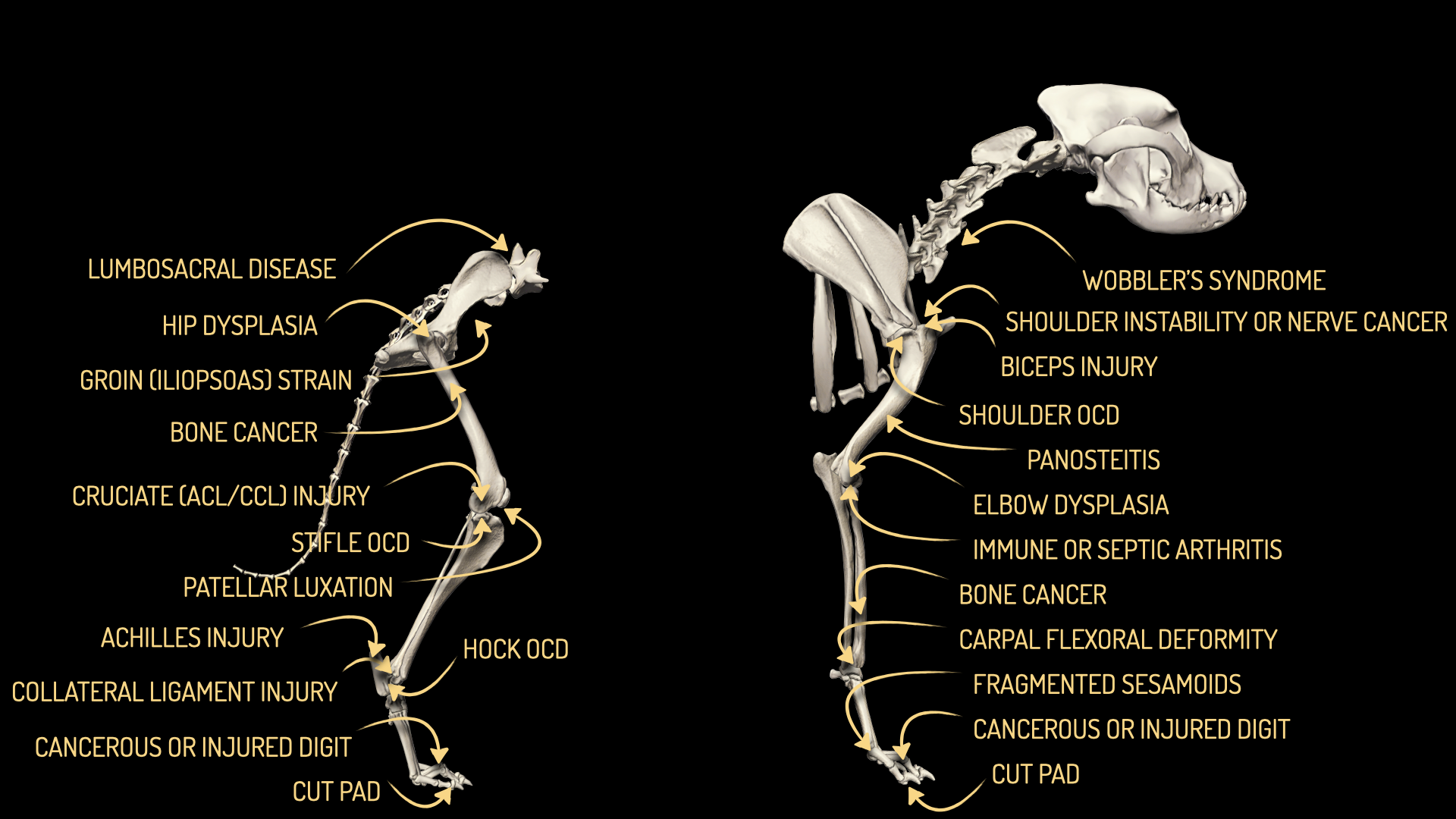DEVELOPMENTAL JOINT DISEASES
NEUTERING AND JOINT DISEASE
A 2020 study proposed a link between neutering and joint disease in some breeds. The table below shows the Cocker Spaniel data.
SPECIFIC CONDITIONS
-
Chronic forelimb lameness in puppies warrants veterinary investigation. Elbow dysplasia is a common cause, and prompt treatment can improve long-term prognosis.
Incomplete ossification of the humeral condyle (IOHC) is common in the United Kingdom. It typically causes severe intermittent forelimb lameness in 3-10 month old puppies. The adult form of this condition is called humeral intracondylar fissure (HIF).
In the UK, severe intermittent lameness in spaniels should always be investigated. Untreated IOHC can cause catastrophic humeral fractures. The best diagnostic test is a CT scan.
Panosteitis causes waves of pain and lameness, which can switch between limbs. Possible triggers include consumption of protein-rich, high-calorie commercial puppy food. Breed risk in American Cocker Spaniels is 1.3x average.
-
Elbow arthritis secondary to elbow dysplasia gradually worsens with age. The best treatment depends on age and arthritis severity. Cocker Spaniels are ranked #10 for elbow arthritis in a UK database.
Humeral intracondylar fissure (HIF) is common in the United Kingdom. It typically causes severe intermittent forelimb lameness, which improves after prolonged rest.
In the UK, severe intermittent lameness in spaniels should always be investigated. Intreated HIF can cause catastrophic humeral fractures. The best diagnostic test is a CT scan.
Sporting dogs have a higher risk of muscle and ligament injuries. Diagnosis can be challenging. In the United Kingdom, HIF should be ruled out before making a presumed diagnosis of shoulder lameness.
-
Panosteitis causes waves of pain and lameness, which can switch between limbs. Possible triggers include consumption of protein-rich, high-calorie commercial puppy food. Breed risk in American Cocker Spaniels is 1.3x average.
Hip dysplasia is fairly common in Cocker Spaniels. It rarely causes lameness unless it is severe. Between 2010 and 2020, 58 Cocker Spaniel hip replacements were registered in a UK database, ranking them #5. A clinical diagnosis of hip dysplasia in Cocker Spaniel puppies requires x-rays to rule out panosteitis, patellar luxation, and ACL injury.
-
Cruciate ligament problems are the commonest cause of chronic hindlimb lameness. Cocker Spaniels are ranked #37 for cruciate ligament injuries and #14 for TPLO surgery. Tap here to learn more about how to diagnose and treat ACL injuries.
Patellar luxation is common. Diagnosis in adult Cocker Spaniels triggers a strong suspicion of concurrent cruciate ligament injury.
Hip dysplasia is fairly common in Cocker Spaniels. It rarely causes lameness unless it is severe. Between 2010 and 2020, 58 cocker spaniel hip replacements were registered in a UK database, ranking them #5. A clinical diagnosis of hip dysplasia requires x-rays showing normal knees and lower back.




